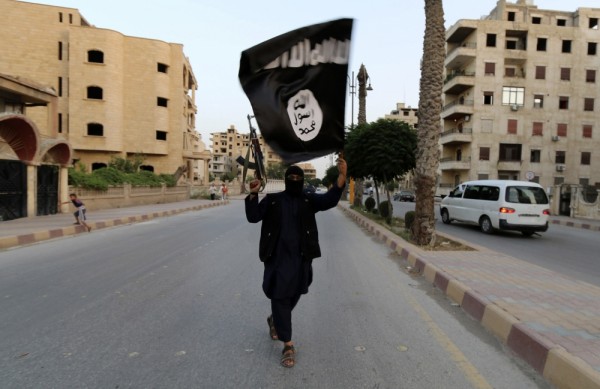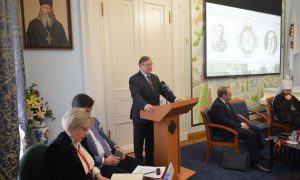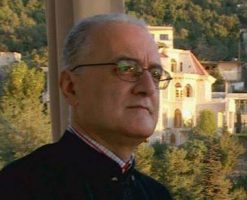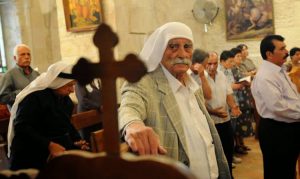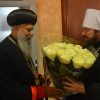Author George J. Marlin, who is also chairman of the Board of Aid to the Church in Need USA, recently released a book titled Christian Persecutions in the Middle East, which not only discusses the growing threat to believers in the region, but also provides the history of many of the churches that have existed in the Middle East since the time of the apostles that could now be facing extinction at the hands of Muslim extremists.
Listed below are five of those churches.
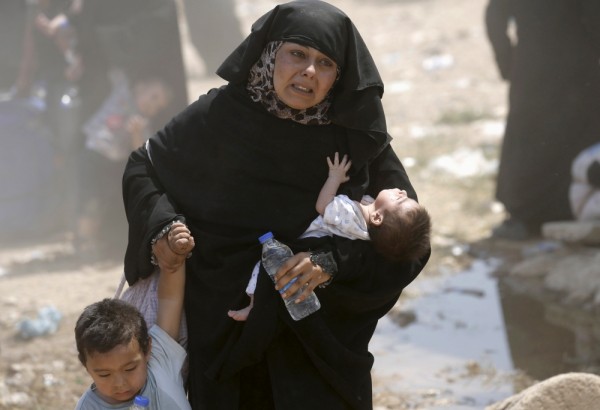
PHOTO: REUTERS/UMIT BEKTAS. A Syrian refugee woman crosses into Turkey with her children at the Akcakale border gate in Sanliurfa province, Turkey, June 15, 2015.
1. The Syrian Orthodox Church
The Syrian Orthodox Church came into its modern formation when Syrian Christians rejected decrees made by the Eastern Orthodox, Catholic, and Western Christian Churches at the Council of Chalcedon in A.D. 451. The Council acknowledged that Christ has two natures, divine and human, which come together in one person.
In an attempt to hold onto their beliefs about Christ, which state that He is one nature of full humanity and full divinity, Syrian Christians regrouped under their own bishops and broke away from the established church.
The Syrian Orthodox Church traces its origins back to the church of Antioch found in the New Testament and considers St. Paul its first Bishop. The head of the Syrian Orthodox Church today is known as the “Patriarch of the God-protected City of Antioch and of all the Domain of the Apostolic Throne.” He is elected by fellow bishops and must be celibate. The patriarch resides in Damascus and the church has archdioceses in Syria, Lebanon, Iraq, Turkey, Jordan, Israel, the United Arab Emirates and Palestine.
Today, the Syrian Orthodox Church has 5 million members worldwide.
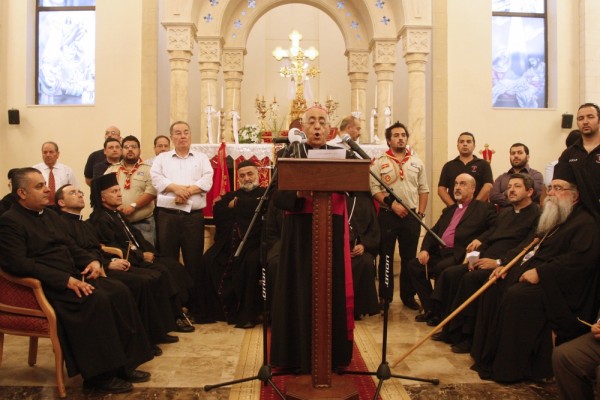
(PHOTO: REUTERS/MAJED JABER. Jordanian Christian clerics hold a mass at the Syriac Orthodox Church in Amman, May 21, 2013.
2. The Coptic Orthodox Church
The Coptic Orthodox Church — Coptic meaning Egyptian — traces its roots back to A.D. 42 when St. Mark the Apostle first brought Christianity to Egypt. Monophysitism, the belief that Christ has a single divine nature, first took root in Egypt and was embraced by the head of the church and patriarch of Alexandria, Dioscorus.
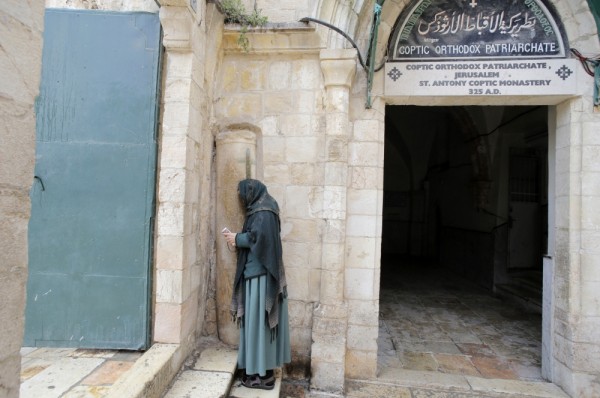
PHOTO: REUTERS/AMMAR AWAD. A worshipper prays outside the Coptic Orthodox Patriarchate during a prayer service in Jerusalem’s Old City for 21 Egyptians Christians whom Islamic State militants beheaded, according to a video released earlier this week, February 18, 2015.
His teachings were condemned by the Council of Chalcedon, leaving many Egyptian believers separated from Catholic and other Orthodox churches.
The Coptic Orthodox church continues to be operated today under the leadership of its patriarch, formally known as “The Most Holy Father and Patriarch of the great city of Alexandria and of all Egypt, of Nubia, Ethiopia and the Pentapolis, and of all places where St. Mark preached.” He is elected by the church’s bishops and must be celibate, abstain from meat and fish for life, and be over 50 years old.
The church’s membership has eroded significantly since the conquest of Egypt by Muslim Arabs in A.D. 640 and Coptic Orthodox Christians are now a persecuted minority in the region.
3. The Orthodox Patriarchate of Jerusalem
Church fathers at the Council of Chalcedon decided that Jerusalem should be elevated from being a diocesan see to patriarchate because of its significance to the birth of the Christian faith. The decision led to the reorganization of 60 diocese in the region that now come under the jurisdiction of a Jerusalem patriarch.
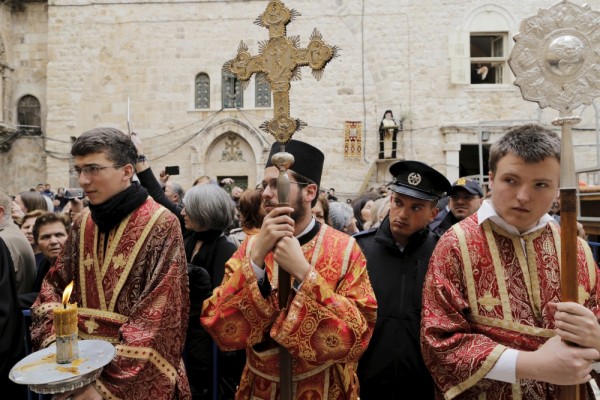
PHOTO: REUTERS/AMMAR AWAD. Members of the Greek Orthodox clergy await the arrival of the Greek Orthodox Patriarch of Jerusalem Metropolitan Theophilos before the washing of the feet ceremony outside the Church of the Holy Sepulchre in Jerusalem’s Old City, April 9, 2015, ahead of Orthodox Easter.
The city flourished as a Christian hub until Arabs conquered the city in A.D. 637. During this period, Christian monasteries and churches were destroyed while much of the population converted to Islam.
European Crusaders took back the land in 1099 and appointed a Latin patriarch. But when Saladin, the Sultan of Egypt and Syria reconquered Jerusalem in 1187, the Latin patriarch serving at that time fled.
The Ottoman Turks took control of the city in 1516 and Constantinople, the former capital of the Byzantine Empire, re-established itself in Jerusalem, which led to the selection of Greek patriarchs in the region.
Today, the Orthodox Church controls many of the holy sites in Jerusalem. Patriarch His Beatitude Theosophilos III has headed the church since 2005 and he resides in Jerusalem where he oversees the affairs of the church’s 130,000 members.
4. Melkites (Melkite Greek Catholic Church)
The Melkite Greek Catholic Church was originally comprised of Christians from Alexandria, Antioch and Syria that complied with the decrees of the Council of Chalcedon in A.D. 451. The Church also traces its origins back to the New Testament Antioch church.
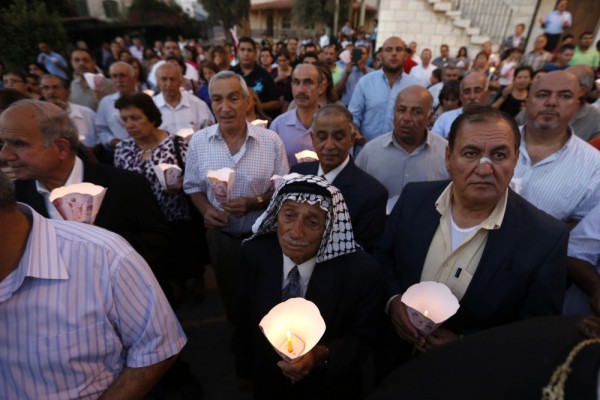
PHOTO: REUTERS/MUHAMMAD HAMED. Christians take part in a candlelight march and prayed for peace in Gaza, Jordan, and in the Arab region, at the Greek Orthodox Church, in Al-Fuheis near Amman August 11, 2014.
Melkite, a term which derives from the Syriac word for king, was originally used to describe Christians in the Middle East who embraced the Christology of the Council of Chalcedon.
After the Catholic and Eastern Orthodox schism of 1054, many Orthodox believers in Antioch looked to re-establish communion with Rome and in 1729, the churches were reunited under the Councils of Reunion.
The Melkite title was then reserved for members of the Antioch Orthodox who were reunited with Rome. The Melkite Church is headed by a patriarch who is elected by its bishops. His election must be confirmed by the Vatican and the leader currently resides in Damascus. There are around 1.2 million Melkite Catholics worldwide and most of them reside in Syria, Lebanon, Jordan and Israel.
5. The Chaldean Catholic Church
The Chaldean Catholic Church descended from the remnant of Nestorian Christians or believers who followed the teachings of former Constantinople Patriarch Nestorius that were contested by the Council of Chalcedon who resided in what is now modern-day Iraq.
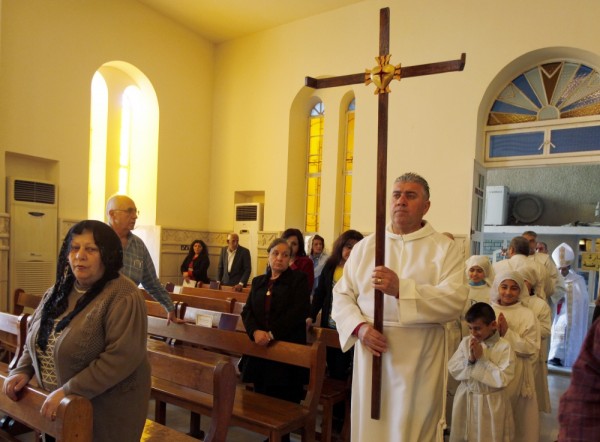
PHOTO: REUTERS/AHMED SAAD. Iraqi Christians attend mass at Mar George Chaldean Church in Baghdad, March 1, 2015. Iraqi Christians say they have no intention of leaving the country despite the recent abduction of over 100 Assyrian Christians by the Islamic State.
After the mass slaughter of Christians in the region at the hands of the Mongols, a family of believers who passed down the office of patriarch for generations governed those who had survived.
John Sulaka, an abbot at a Nestorian monastery opposed the established patriarch and sought to have communion with Rome by traveling there in 1551. He was ordained as a bishop by the Catholic Church and upon his return, he set up a new patriarch affirmed by the pope.
Sulaka, who had taken on the new name Simon VIII, was captured and killed in 1555 by the Pasha of Amadya, and for the next few centuries the Chaldeans fell into chaos.
In 1830 under Pope Pius VIII, however, they were brought into full communion with Rome and a new patriarch was established who resided in modern day Mosul, Iraq. Today, there are 18 Chaldean dioceses in the Middle East with 10 of them being located in Iraq. The patriarch was moved to Baghdad after World War II and its 500,000 members are mostly comprised of Assyrians.
For more information on churches that have roots in the Middle East that are now facing the threat of radical Islam read George J. Marlin’s book Christian Persecutions in the Middle East.












